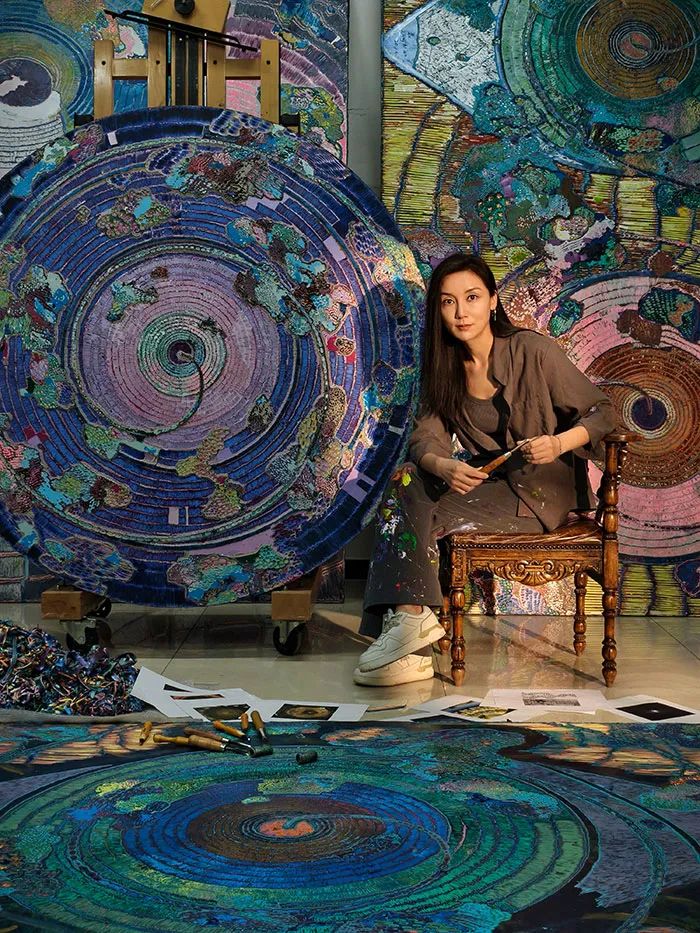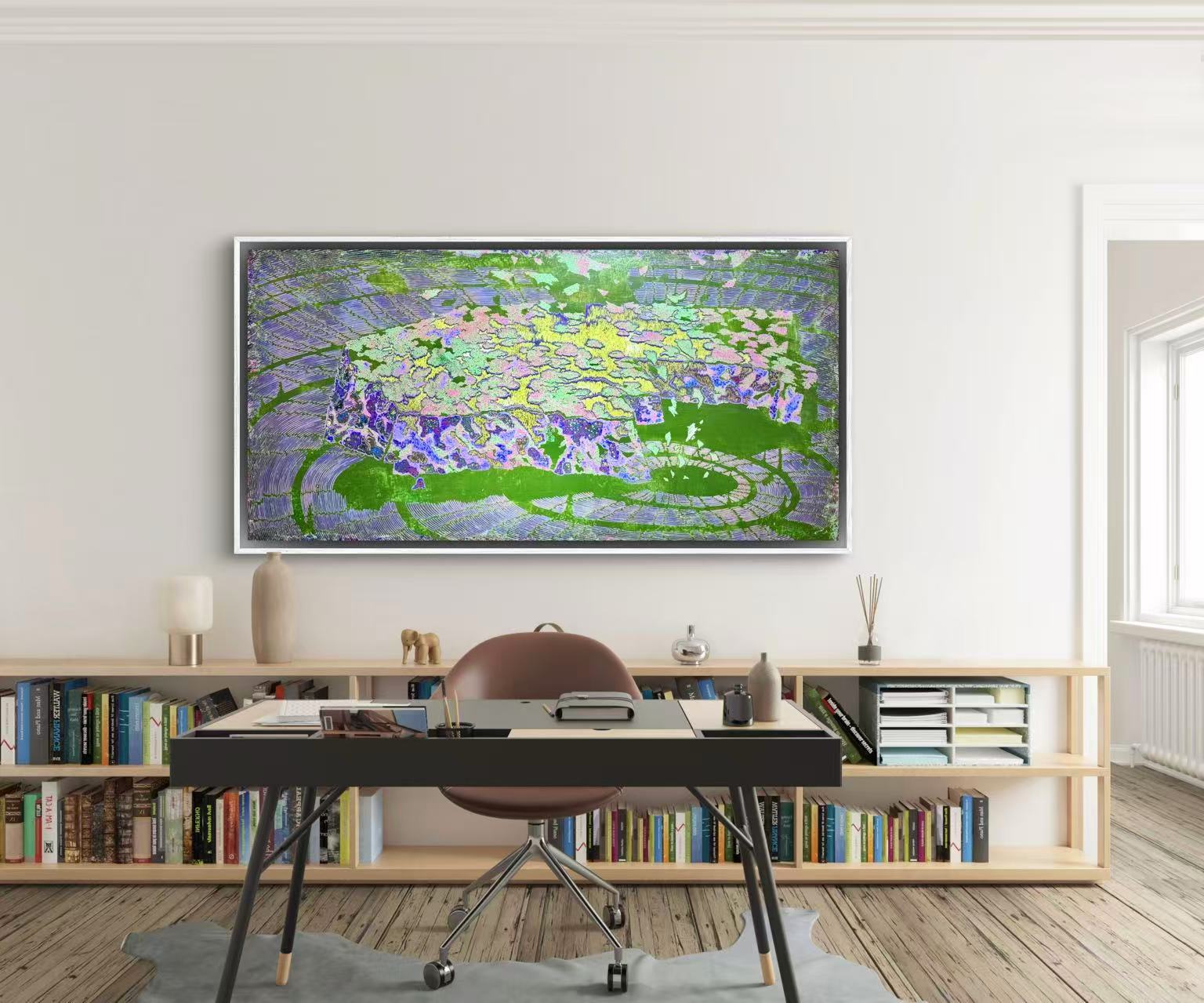Born in Jilin in 1981 and trained at Beijing’s Central Academy of Fine Arts, Jiang Miao has spent the last two decades forging an art practice that quietly bridges the ancient and the avant-garde. Fresh from her BFA in printmaking in 2005 and an MFA four years later, she retreated to her studio with a singular resolve: to work ten hours a day or more, not out of obligation but to satisfy what she calls an “inner need”—a drive to connect her material body with a deeper spiritual pulse.
Jiang’s early black-and-white woodcuts bear the sharp clarity of that formative intensity. Each cut into the block was an act of will, an assertion of form against formlessness. Yet even then, she was probing questions of duality—Yin and Yang, point and line, energy and life—that would come to define her subsequent work. By the late 2000s she had shifted briefly into realist oil painting, exploring how color and light might capture the fleeting sensations of memory and emotion.
It was her discovery, in recent years, of knife-carved acrylic on wood panels that crystallized Jiang’s vision. Layer upon layer of high-saturation acrylic is poured and brushed onto a prepared surface, allowed to dry, and then scored, gouged, and scraped with an array of steel blades. The result is a landscape of ridges and valleys, where every incision reveals a hidden vein of pigment. From a distance, sweeping spirals and Möbius-like bands emerge—abstract symbols of cyclical time and infinite flow. Yet a closer look rewards patience with a forest of microscopic details, tiny continents of color that seem to pulse with life.
This interplay of macro and micro mirrors Jiang’s embrace of the classical Chinese idea of “unity of heaven and humanity” (天人合一). She draws on Daoist notions of constant transformation—the I-Ching’s teaching that “reversal is the movement of the Way”—and on Buddhist concepts of interdependent life (生生相息). Yet her work is far from purely retrospective. Influences of Western Impressionism flicker in her vibrant palette and the way light dances across carved surfaces. Rather than fusing East and West in a simple pastiche, Jiang allows her process to become a form of “divine prompt,” a dialog with forces she cannot entirely predict or control.
What emerges is an immersive, contemplative space—one that demands not just to be seen, but felt. The carved acrylics are at once methodical records of labor and spontaneous eruptions of surprise. They remind us that art, for Jiang, has never been a matter of sudden epiphany but of patient, daily cultivation: a lifelong practice of carving away what is superfluous until only the essential remains, radiant and alive.

Artist Jiang Miao

Reborn, 2017, Acrylic and oil on panel, carving,180x90cm
